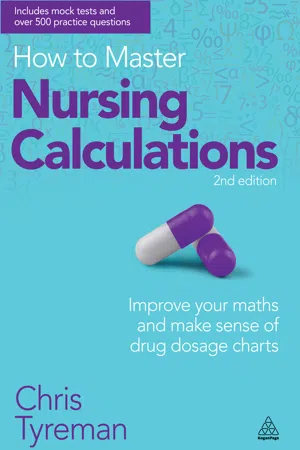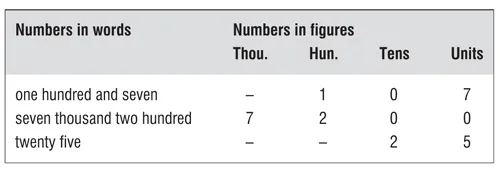
How to Master Nursing Calculations
Improve Your Maths and Make Sense of Drug Dosage Charts
- 224 pages
- English
- ePUB (mobile friendly)
- Available on iOS & Android
How to Master Nursing Calculations
Improve Your Maths and Make Sense of Drug Dosage Charts
About This Book
For the maths-phobic, this 2nd edition of the best-selling How to Master Nursing Calculations, is ideal practice for learning key numeracy skills. The perfect companion for your training and in the first few crucial years of your career, it builds your competency through practice, revision and every day examples. Contents includes a review of the basics, clear illustrations of instrument scales, medical administration records and pharmaceutical labels as well as a detailed guide to reading drug dosage charts.Including a brand new list of important abbreviations and a section on how to make drug calculations without equations - requiring little mathematical knowledge - How to Master Nursing Calculations, 2nd edition, will help you master complex dosages and turn you into a maths whiz.
Frequently asked questions
Information








Table of contents
- Cover
- Title Page
- Imprint
- Opening
- Contents
- Introduction
- 1 Basic arithmetic skills
- 2 Fractions and decimals
- 3 Measurement
- 4 Drug dosage calculations
- 5 Drug administration
- 6 Mock tests
- Answers to tests
- Appendix 1
- Appendix 2
- Appendix 3
- Full imprint